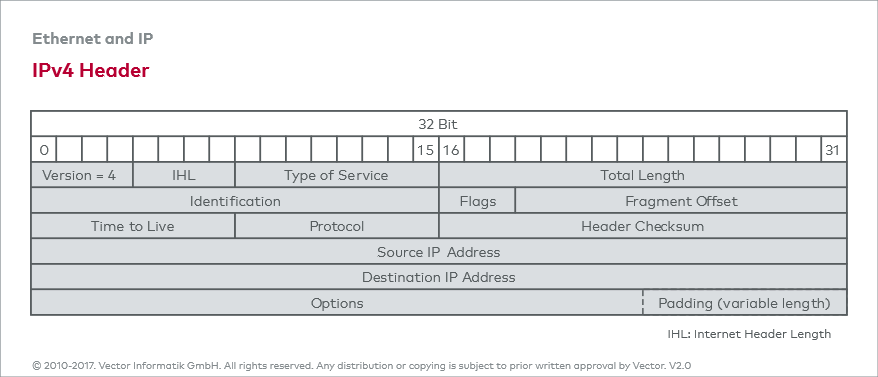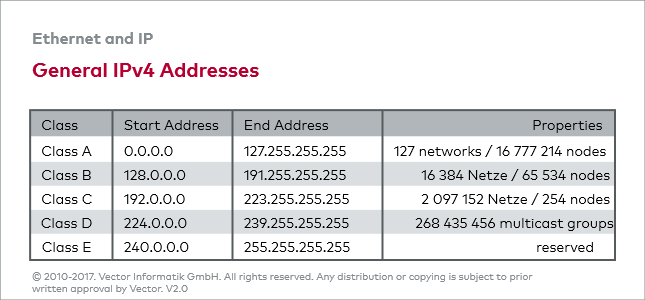IPv4 - Version 4
Addresses and classes
The 32-bit IPv4 addresses are represented byte by byte as a decimal number separated by a dot (e.g. 192.168.10.1). Address classes that govern the address structure for the public area of the Internet were defined for IPv4 many years ago. While these classes no longer have much practical relevance, they permit a basic division into a network address and host address so that the node count can be inferred.
Local addresses
Public IPv4 addresses have been allocated for years. However, there are local or private address ranges that may be freely used, for example, in companies or private households. Because these addresses are never found in the public network, a router does not forward local addresses to the Internet without changes.
Subnet masks
The utilized destination and source node addresses are composed of the left-justified network address and the right-justified host address. The position at which the IP address is divided is typically defined using subnet masks. These can be written as a stand-alone address (e.g., 255.255.255.0) or as a prefix after an IP address (e.g., 192.168.10.1/24). While all left-justified set bits indicate the network address (e.g., 24 bits), the right-justified unset bits allow the host address to be inferred (e.g., 8 bits).
Multi- and broadcast
If an IP packet is to be sent to multiple nodes, both Multicast addresses and Broadcast addresses can be used. While Multicast addresses have to be configured or created via IGMP, Broadcast addresses can be derived using the host addresses. The highest value of a host address range always corresponds to the associated Broadcast address (e.g., 192.168.10.255).




